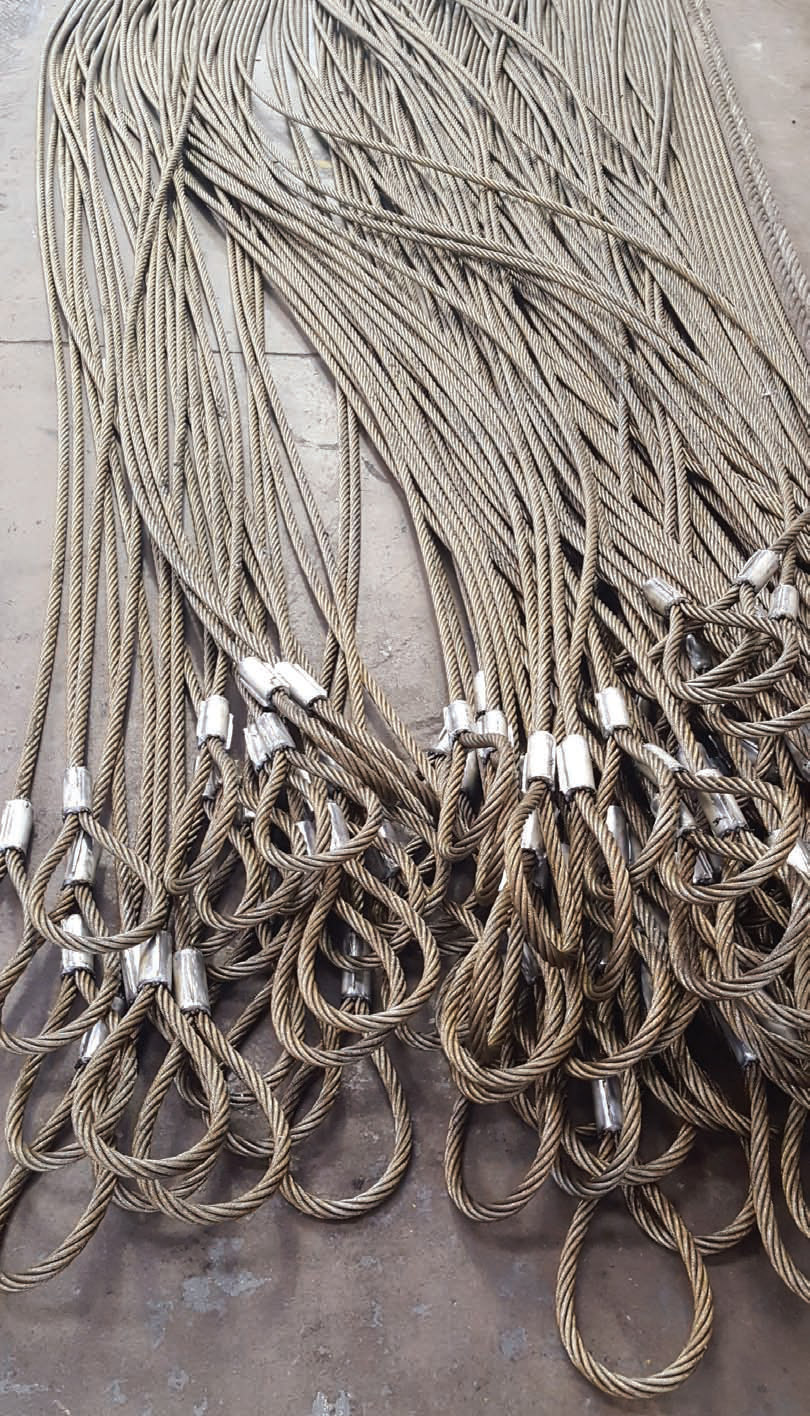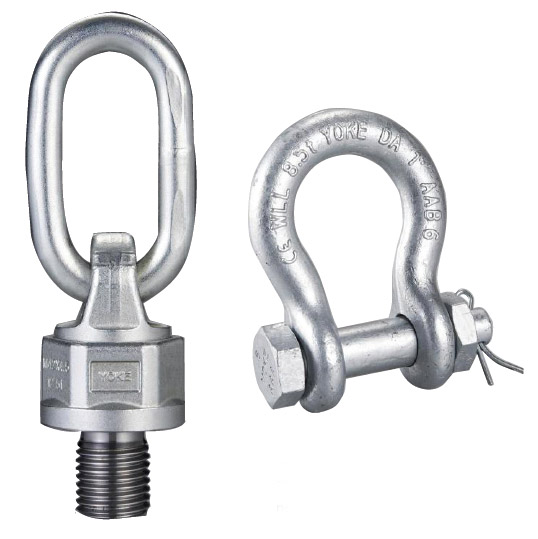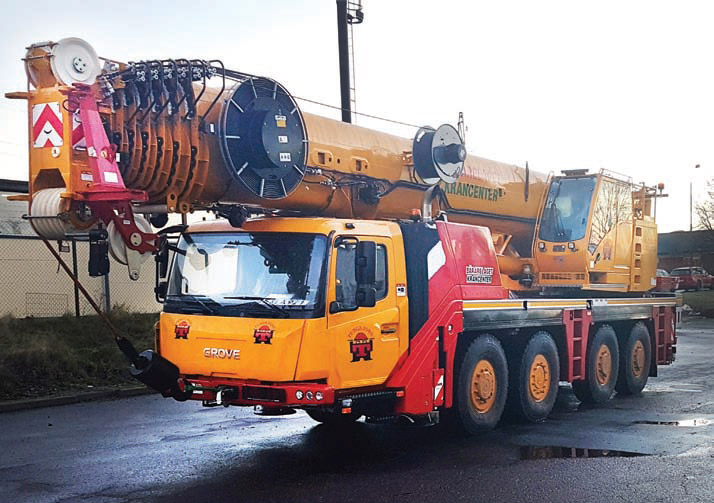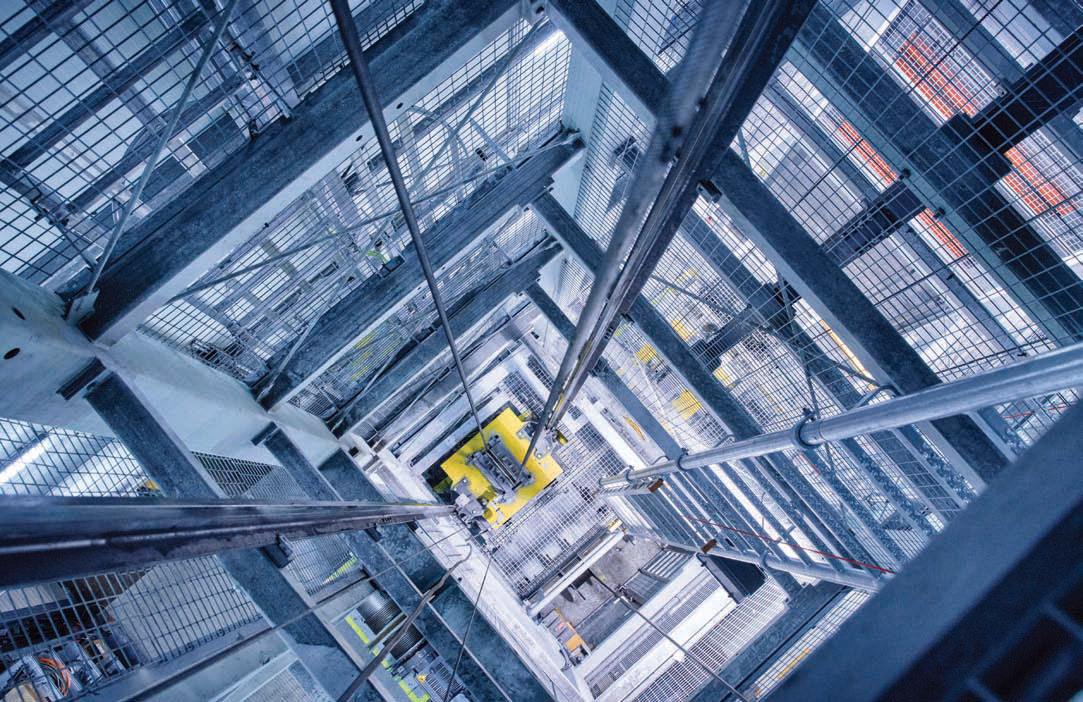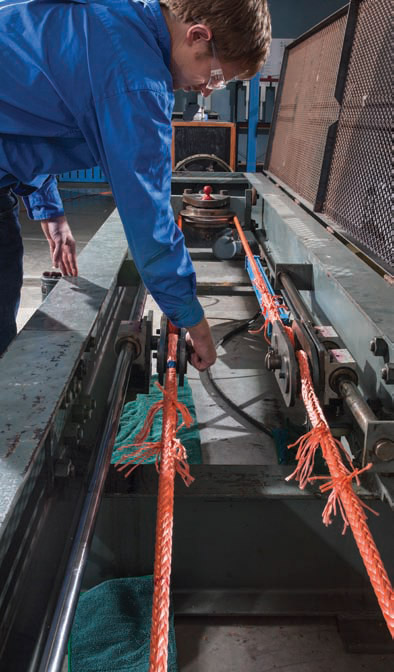Test of strength
21 March 2017Ensuring that crane ropes and rigging products meet local, international and corporate standards is a vital activity for manufacturers and suppliers. Bernadette Ballantyne reports.
In January 2017, UK-based company Rope and Sling Specialists (RSS) achieved something that managing director Steve Hutin says will open up new markets for its offshore business.
“Although we do supply basic rigging equipment to the oil and gas industry, we don’t actually supply the lifting sets. Now that we have the DNV 2.7.1, it is going to open up a new market for us,” Hutin states.
Achieving the DNV GL international standards certification gives the assurance required by companies in the oil and gas sector that RSS wire rope slings comply with DNV 2.7-1 for offshore containers, as well as EN 12079-2 ‘Offshore containers and associated lifting sets part 2: Lifting sets – design, manufacture and marking’; EN 13414-1 for wire rope slings, and IMO/MSC Circular 860, the International Maritime Organization’s Maritime Safety Committee guidelines for the approval of offshore containers. DNV GL was formed out of the 2013 merger of testing, certification and consulting agencies Det Norske Veritas and Germanischer Lloyd. Organisations like DNV GL ensure that providers of lifting sets are audited at regular intervals to give end users assurances that sourced and manufactured equipment from suppliers complies with relevant standards and guidance.
The certificate also lists the component manufacturers that RSS sources from.
Hutin explains that approval entailed taking the auditor through the manufacturing process. “Basically, we had to have the DNV auditor come to us. We had to manufacture a sling in front of him. Then you have to do a break test on the wire itself. We had to put it on a test bed and apply a force to snap the actual sling to make sure that it comes within the safety factors.”
Taking the auditor through the manufacturing process included inspection of the manufacturing of slings in the company’s new 1,000t SAHM SPLICE hydraulic press, which enables formation of slings up to a 55t working load limit (WLL). The press is located at RSS’s Welsh headquarters.
RSS sources its wire rope from three main manufacturers, each of which is listed on the DNV GL certification. The Netherlands’ Hendrik Veder, and Usha Martin and Latch & Batchelor in the UK. “They give us breaking load certifications and mill certifications. The construction, the steel grades, the breaking loads, so we know everything before we break them,” says Hutin.
For the offshore-lifting sector, the ropes must be a ‘6-36’ arrangement, meaning they have six strands each of 36 wires.
“Due to the downturn in the offshore industry at the moment, [the offshore lifting sector] is not as buoyant as it was. Over the next 18 months, it will recover,” predicts Hutin.
And when it does, RSS will be ready. With each container lifted on and off a rig requiring its own sling, the potential for the company is huge.
RSS wire-rope supplier Hendrik Veder has a three-pronged approach to ensuring quality from its own supply chain. The first is what managing director Harry MacLean describes as “taking a fair approach to selection”, involving visits by the quality assurance team and audits of the factory. “Second, we have them comply with standards and commercial obligations not just on quality but performance and time, and the third part is that we conduct cyclical performance visits on all suppliers.”
In terms of certification, the firm insists on factory mill certification from steel suppliers and then carries out its own certification process in house.
“Here in Rotterdam, we have a test bed up to 1,400t, and fully qualified test-bed engineers, so we can do braking tests and destruction tests on a cyclical basis,” says MacLean. The company also takes a transparent approach with its own customers, who can visit the factory to review quality procedure. “Guys are welcome to come and inspect our records at any time. The supply chain department is here at any time for any of our customers to inspect our records.”
Balancing weight and strength
The rush to stronger and harder materials to meet the demands for lighter but higher WLL lifting products can become a safety critical issue in the wrong hands. Yoke promises to solve this conundrum with Yoke steel, and its ability to manufacture a broad range of equipment and components including chain fittings, wire-rope fittings, lifting points, blocks and sheaves.
Yoke’s continuous investment in research and development has been supported with more than 35 years of working in partnership with the National Taiwan University to develop Yoke steel, ensuring that existing and new materials have the correct chemical composition so hardness levels are controlled to eliminate risk. Yoke steel looks beyond the standards required for material chemistry and consistency of heat treatment from batch to batch so that the company can stand by its mission statement of “safety is our first priority”.
Steven Hong, president of Yoke Industrial Corporation, says, “Yoke is proud to promote industry and academia working side by side for the development of high-performance alloy steel, such as Yoke Steel. We have seen our steel progressing from industry-standard high-strength alloy steel (HSLA) to modified steels (M versions), modified extreme (MX versions) and, in the future, MXX materials. Yoke steel, as the name suggests, is unique to our company. The joint research we carry out on microstructure observations, mechanical properties, fracture analysis and thermal mechanical treatments helps the advancement of Yoke steel and the manufacturing process.”
There is no substitute for real-world experience, and working closely with operators and distribution partners when developing lifting components for marine and offshore applications. The recent decisions of some manufacturers to rush towards stronger and harder materials without fully understanding the effects on material and the consequences of operating in one of the most challenging environments has resulted in potentially catastrophic failures through hydrogen stress cracking, stress corrosion cracking and hydrogen embrittlement, also known as a brittle fracture.
This, according to Yoke, has been recently witnessed with the failure of high-grade alloy bolts and master links, a phenomenon not regularly recognised by operators and inspection companies alike.
Yoke has a dedicated team of technicians focusing on the properties of raw materials used in their products, heat treatment and hardness, ensuring the stride towards higher-grade materials and lighter-weight components does not create life-threatening risk. The company also works with external technical institutes to develop future material and heat treatment needs.
The control of the heat treatment process starts during the choice of the raw material to ensure the specific chemical elements are present. Cost cutting at this stage or during the heat-treatment process can prove catastrophic if the material microstructure does not meet the specific properties to develop ductility and impact values stated in the original engineering specification. This recipe is key to the features of the finished product and the capabilities of operating in challenging environments.
Yoke runs a constant and strict production facility with quality control at every manufacturing stage, from raw materials to finished product.
Yoke is ISO 9001 certified by DNV GL and has received numerous type approvals by major international authorities, including DNV GL, ABS, API and DGUV.
The company’s material assurance process starts with spectrographic analysis, along with visual and dimensional controls on the raw material to ensure the proper metallurgical content and quality aspects of Yoke steel.
The company uses closed die forging to maintain dimensional and physical dimensions, with embossed markings for future inspection needs. Computer controlled machining is used to control the accuracy of combination parts. Components are heat treated in continuous and batch furnaces.
Magnaflux crack detection is performed on all forged components after heat treatment to ensure zero defects. Charpi impact testing is then performed on batch samples to ensure impact values are achieved at low temperatures. Yoke aims for a minimum impact resistance of 42J at -40°C on many regular products. Proof load testing up to 2.5 times the WLL and dynamic fatigue testing at 1.5 times the WLL are used to verify product performance in the field. Ultimate breaking load testing is also preformed on batch samples to validate ductility and ensure design factors are maintained.
Yoke continues to offer product inspection and safe-use training once the lifting components are in the field through detailed safeuse instructions, and pre-use, post-use and application training conducted by trained technical sales representatives.
Multi-stage testing
Another firm that takes a thorough approach to testing is Austria’s Teufelberger, which manufactures wire ropes sourced primarily from European suppliers. “The wires are our raw material and the wires have to meet EN 10264 – the minimum basic standard for roping wire – and our in-house specifications, which are above the EN standards,” explains Peter Baldinger, technical director for wire ropes at Teufelberger. He notes that as far as allowable range for carbon content, manganese and silicon are concerned, the company places stricter requirements on its steel than the EN standards.
As the wires – which, for cranes, range from 0.3 to 5.5mm – come in to the factory, each batch is tested to determine its tensile strength as well as its bending and torsional properties. The company also has a metallographic laboratory with machines that can cut, grind and polish the steel before it is examined with a range of microscopes and hardness-testing devices. Any that don’t meet the exacting requirements are returned to the supplier, which may be in Germany, Italy, Austria, Poland, Spain and Slovakia.
“Once everything is tested and everything is OK, we start with the spooling process,” says Baldinger. “We perform an uncoiling process from the Z2 or Z3 coil (400 or 800kg) to our machine spools. There, we start measurement. All of our in-house machines have laser length measurement devices.”
According to Baldinger, this is a critical aspect of quality control, and something it claims to take a leading position in.By investing extensively in its measuring devices, the firm can ensure that the required parameters and settings are consistent over the many kilometres of wire production that it carries out, meaning that quality across the length of rope is consistent.
Back to the production process, the next step is to produce the strands, which are made up of a number of wires. In the most simple arrangement, an individual wire is surrounded by five or six more wires, but for crane ropes, the strands will be much larger, with the Warrington-Seale arrangement, for example, being common. In this rope, 26, 31, 36 or 41 wires are used to make a single strand. “We produce a number of strands depending on the rope construction required, and then these strands are moved to the closing machine and we create the steel core of the rope. The steel core has to be covered with polymer, and a lot of our constructions have polymer layers inside.”
The next step is to bring the steel core to the extrusion line and cover it with polymer. Meanwhile, outer strands are produced on other machines before the final closing operation is carried out, at which point the steel core is covered with the outer strands. “Once we have produced it, we have to test and analyse if everything is correct,” says Baldinger.
This starts with the tension properties of the rope using the 50 or 300t tension machines.
“The 300t machine is the largest operating in Austrian industry. Not only does it test tension, but it also allows us to measure torque properties,” Baldinger adds.
To test bending, the company has four bending machines that test the performance of the rope as it runs over the sheaves. The machines conduct 1,100 test days every year. Performance in this area is crucial in terms of safety, says Baldinger. ISO 4309, for example, describes discard criteria. Wire breaks should always happen in the outer wires because the inner layers cannot be inspected visually. “Therefore, Teufelberger develops and analyses each rope construction in bending properties, ensuring that the discard really can be done following the ISO,” says Baldinger.
Furthermore, in 2008, Teufelberger installed a crane-style testing device to analyse spooling behaviour, which not only helps quality assurance, but is also a vital research and development tool in the industry.
US requirements
Over in the US, manufacturer Wire Co World Group also produces wire rope for global customers, as well as fabricating lifting slings.
The firm owns companies such as CASAR and Union, well-known suppliers to the crane industry.
Director of global engineered fabrications Tim Klein says that the tests required are set out very clearly in ASME and OSHA standards. “I make sure that all of our fabrication shops have all of the right procedures to make sure that we are following the ASME standards. We are pretty strict about that.”
For slings, ASME B30.9 is traditionally followed by all parties, and the OSHA standards are similar. “Obviously, everyone has a little bit of proprietary information that they put into their splicing to make sure that it is correct and we can do it efficiently. But there are certain things that have to be on the sling itself,” says Klein.
For example, it has to be marked with the rating-capacity tag to ensure that the user knows the diameter of allowable sling configurations and the rated capacity. Proof testing is therefore an important part of the process, with section 9-2.6 of the standard requiring that all new swaged sockets, poured sockets, turnback eyes and mechanical joint endless wire rope slings are proof tested, as well as all wire rope slings that employ previously used or welded fittings, or slings that have been repaired. “You have to proof-load to twice the rated capacity,” says Klein.
At the start of manufacturing, WireCo draws out its own wires to create the ropes. “We bring in 6,000lb rod lots into our drawing facility and run them through our cleaning house, which acid cleans the wire to remove any uncertainties, and then we put a coating on the wire to help us with the drawing process. Then it is ready for production,” says Klein.
“We are tracking the lots and we know what is in the system. Then it gets allocated for drawing into a specific wire that is going to go into a specific rope diameter. Of course, depending on that diameter, you select the right rod and tensile strength.”
The rods of course come with factory mill certificates, and the firm also does tensile testing, torsional testing to check ductility, and a bend test on some of the lots, but not all of them as the ropes are all tested at the end of fabrication.
Drawing the wire itself is an “art”, says Klein, “because, as we draw that wire down, it is going to increase the tensile strength, and if you draw it too far it can get extremely strong but also very brittle, so we want to be sure that we don’t overwork the steel.”
Once the wires are drawn out, their tensile and torsional characteristics are tested before the wires go into a stranding machine. They are then closed around the core. “At that point, the rope is in accordance with ASTM or ISO or EN standards, and we use tensile testing and modulus testing to ensure that those meet the applicable industry standards.”
Another important area of investment when it comes to quality control is maintaining the equipment. “We spend a tremendous amount of time and money ensuring that our machines are in top-notch working condition and that we don’t have mechanical issues, and once the ropes are produced, we cut a sample off the front and the end of the rope to ensure that we have consistent quality products in accordance with our standards as well as the industry standards,” says Klein.
Just as important, he says the firm is always looking to learn from any issues. “You can do 100 things right and one thing wrong, and the customer only remembers the thing that was wrong. We are always looking to ensure we don’t have the same problem twice; we learn from past mistakes to ensure that we provide the best product.”
Synthetic rope
Despite the different standards and material properties, there are many similarities between quality testing for synthetic rope and its traditional wire counterparts. “As a new technology, the burden of proof is much higher, and we want to ensure it is done properly. We are very excited about entering this market but it has to be done with safety in mind first,” says Michael Quinn, director of new business development at Samson Rope. The firm’s K-100 synthetic mobile-crane line has been specifically designed with high-performance fibres as a lightweight alternative to wire rope in cranes. Manufacturer Manitowoc has been the first company to embrace the technology, starting with its 65t Grove RT770E rough terrain in early 2014. “We provide a manufacturing certificate with every hoist rope that includes documentation on the batch, which is typical for other hoist ropes. It also includes break strength of the manufacturing lot,” he says.
Like other major manufacturers, the firm is ISO 9001-certified for its manufacturing processes, but from a product perspective, it works according to ISO 2307 ‘Fibre ropes: Determination of certain physical and mechanical properties’. “That standard specifically speaks to the test method used to validate that we meet our strength specifications,” says Quinn.
At the same time, other standards used in other industries also set out quality criteria that Samson adheres to. “For each industry we service, we work with the appropriate regulatory and advisory boards. For example, where we sell synthetic mooring ropes for LNG tankers, there is an industry body called OCIMF that sets guidelines for how synthetic rope is used in those applications,” says Quinn. “Our products are designed to be used in accordance with their guidance.”
In terms of the crane industry, Quinn points to ongoing development of standards for synthetic ropes such as ASME B30.30 and Europe’s FEM mobile crane manufacturers group, which is working on a guideline for these ropes on mobile cranes.
As the standards evolve, Samson carries out a raft of its own tests to assure users of the quality of its ropes, starting with initial batch testing of all the fibre that comes in as part of a sampling programme where information can then be traced back to each lot. Once it is braided into ropes, there is a whole battery of testing.
“We try to look at all of the different ways that rope can wear, fatigue and be damaged. We then characterise the performance of the rope in those areas, and then, of course, use that to improve our design,” he says.
This includes tension-tension fatigue testing – to load and unload a rope over and over again – as well as bend fatigue testing.
“We also look at the applications to determine which wear mechanisms have the greatest impact. We perform testing related to spooling – how well does it spool on to the winch drum? We also do testing related to drum connection strength and fatigue.
This is to ensure that our rope can properly connect to the crane. We have done a fair amount of testing to determine the strength of that connection and how it fatigues over time to ensure that we are meeting the requirements.”
As well as fatigue testing, the firm carries out residual strength testing. “We have ropes that are out in the field on cranes used today, and we have a sampling programme to bring whole ropes or samples of those ropes. We are trying to collect a combination of number of lifts, engine hours, and the residual strength of that sample to build a data set depicting how that rope fatigues over its lifetime.
This all then feeds back into our design process.”
This is a vital part of the strategy for Samson, which plans to expand beyond the K-100.
“Eventually, we will have multiple products that are specifically designed for specific crane types and applications,” says Quinn.
Letter: The correct sheaves for synthetic ropes?
In February, Cranes Today reported online that a Manitowoc buyer, Sweden’s Lambertsson Kran, had ordered the first ever all terrain to be fitted with synthetic rope. After being impressed by the rope at an open house run by Helsingborg Samson dealer Scan unit, the company requested it be fitted on its new GMK4100L-1. Lambertsson regional manager Claes Jakobsson explained that by using the lighter synthetic rope, the company expected to be able to carry more counterweight, making the compact crane even more suitable for taxi crane work around Malmö.
The story prompted a question from one of our readers, which Samson is able to answer in this edition.
Q: My understanding of the use of synthetic rope is that the sheaves used should be only steel. The crane pictured has Nylatron sheaves. The synthetic-rope industry sales agents [in the offshore industry] indicate that the heat caused by synthetic rope running on Nylatron sheaves will cause failure of the sheaves due to heat transfer.
I would like to get a response from the rope supplier, as the offshore industry is debating the use of this type of rope for use on platform cranes while the API Specification 2C eighth edition rewrite process is in progress.
Wilfred Guidry Jr, competence lead, Sparrows
A: Offshore cranes and mobile cranes are different applications. For mobile cranes, the use of nylon sheaves is acceptable with synthetic rope, as proved by multiple years of application use.
For offshore cranes, many cranes employ an active heave compensation (AHC) system. This system is designed to maintain position of a load under the waterline while the vessel is moving with the ocean waves/swells. The AHC system requires that the position of the rope on the sheaves be adjusted with every wave cycle (9–12 second cycles) while under load. Also, in order to maintain the same payload position, the same section of rope repeatedly passes through the bend zone, generating heat at the rope and sheave, which can damage both. Therefore, steel or aluminium sheaves, which act as heat sinks, are recommended for these types of systems.
Michael Quinn, director of new business development, Samson Rope
